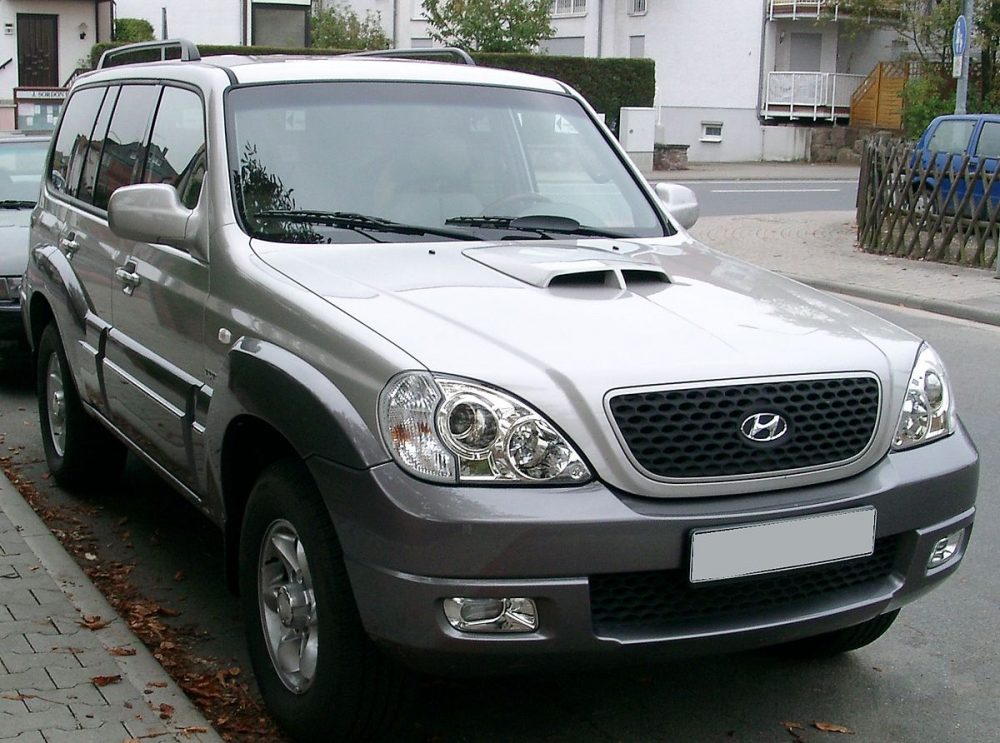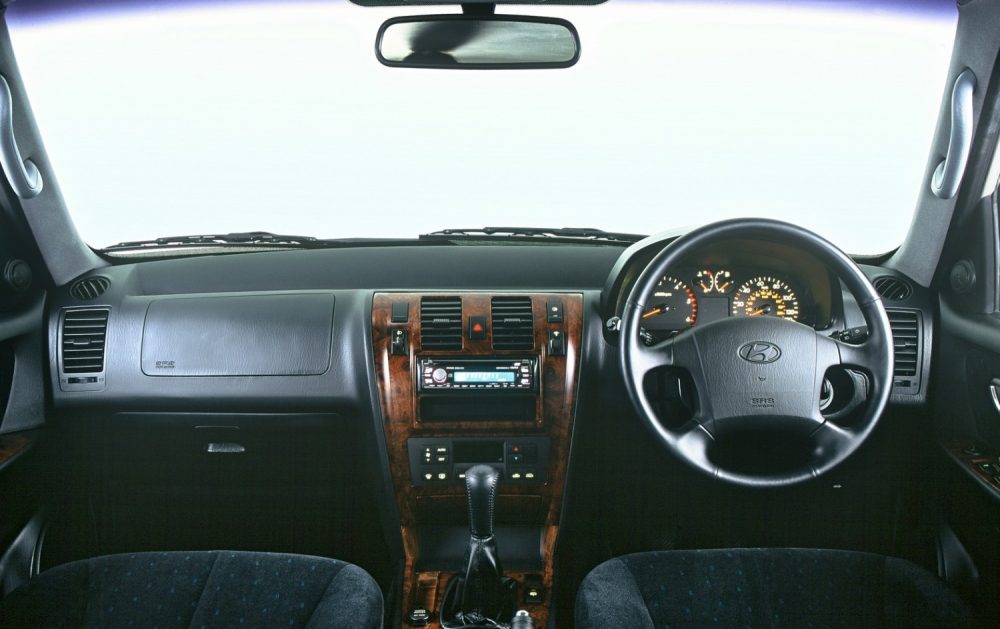Hyundai Terracan was launched in August 2003. Back then Hyundai was riding high on the success of the Santro.
Moreover, the company was launching the Xing, which will turn out to be Hyundai’s identity car in a manner. Everything was going well for the South Korean carmaker. It gained the position of the second-largest car manufacturer in India back then.
So, why didn’t Hyundai Terracan benefit out of that? Was the Terracan an inefficient car? Did Hyundai mess something up in promoting it? Or the Indian market simply wasn’t ready for it?
The reasons might be numerous. Let’s find out more.
Also Read: Hyundai Accent | A Take on the Esteem
Engine | Hyundai Terracan
The Hyundai Terracan had one diesel engine on offer. The 4 cylinder 2902 cc engine CRDi diesel engine generated 148 bhp and a massive torque of 343 Nm.
The car came mated with a manual transmission offering 4WD. But the 4WD branding and the off-roading capabilities did little to help.
Exterior | Hyundai Terracan

Exteriors of the car were rather noteworthy. The upright muscular stance screamed of ‘off-roading’. The wheel arches and the roof rails just added to the entire look of the SUV.
Terracan’s exterior was a point of healthy debate for many. The off-roading party were simply in love with its no-nonsense design elements. Simple, straight and to the point.
However, for many the design seemed to be a bit bland. Many people felt that the design didn’t seem to be expressive enough.
Interiors | Hyundai Terracan

Hyundai Terracan did try to get the best of both worlds. Terracan’s rugged and hardcore off-roadish exteriors were combined with sort of plush but minimal interiors.
The front console of the car was typical Hyundai, with curved signature AC vents, along with some dials and knobs. The three different rows of the Terracan were no doubt spacious and to the point. The middle row of the car was wide enough to seat even 4 people to some extent.
In the last row, the story was a little bleak. Side-folding seats of the car did little on the comfort end but were feasible enough for shorter journeys. Adding to the misery was the fact that thee last two rows didn’t have separate air vents, which made the ride a bit more uncomfortable.
Ride and Handling | Hyundai Terracan
While driving the car, it did feel dominating. The car’s upright stance gave you a clear view through the windscreen of the road ahead.
The CRDi engine was surprisingly silent while driving and did have a good pickup. However, the handling is where Terracan didn’t give a good fight. The suspensions of the car felt a bit wobbly over the bumps. The power steering of the Terracan didn’t have the power and did feel a bit unresponsive at times.
You Might Also Like: The Hyundai Santro | 22 Years and Strong
What Went Wrong?
After a two year underperforming stint in the Indian markets, Hyundai Motors India Limited decided to stop the sales of the Hyundai Terracan.
The reasons were very obvious and straightforward- No sales. The car failed miserably in the Indian automotive market and didn’t make the hype it was expected to make. The company sold just 200 units of the Terracan in 2005 against its goal of selling 700-1,000 units annually. Here’s what we think might have gone wrong.
Brand Perception
Hyundai suffered the same thing in 2004, which Maruti will go on to face with the Grand Vitara in the future. After launching a slew of vehicles such as the Accent, Santro, Xing, the car might have grown an image of a budget family car maker. People didn’t see Hyundai as a carmaker which might bring an SUV.
Competitors
The competitors for the Terracan were big heavyweights like the Mitsubishi Pajero or the Endeavour. These cars already had a name for themselves, and people did associate themselves with these brands.
Quality
You can spend a hefty amount on marketing but if the product isn’t good, it won’t sell. Simple. Hyundai might not have sensed that. Yes, the car was good. Yes, it looked good. But it wasn’t worth shelling off your hard-earned 20 lakhs. The car did feel a bit underworked on the inside. While the interiors were kept simple, the quality levels weren’t maintained. Pajero and the others were already doing a good job with the interiors.
Conclusion

Hyundai’s Terracan was simply a rebadged Subaru Forester.
Yes, the car didn’t work out well for Hyundai. But, it did give it a lesson. What worked everywhere else, might not work in India. The car did receive a decent response in the international markets. The Terracan’s sales figure dipped way below expectations.
However, there’s always marks for trying. Hyundai should be appreciated to take a bold step of bringing in a car which was somewhat beyond its niche. At a time, when other brands were trying to create an image, Hyundai tried experimenting with its own.
Suggested For You: The Curious Case of Opel Cars in India






I have owned 4 hyundai terracans I still own one at the moment I have owned other 4x4s but I find the terracan is a no nonsense no frills robust vehicle @ a excellent towing vehicle
I owned a Hyundai Terracan for 7 years and had not a single worry with it. Mine was especially set up for towing – dual battery system, coil, oil and air suspension on the back, heavy duty tow bar, bull bar, side steps, driving bar lights (×2) and last year I sold it! I have greatly regretted it since and I am sincerely looking to find a relatively low kilometer Terracan to replace my current vehicle. This Terracan would be greatly appreciated and cared for!!
Chris Cook 14th November 2022
I owned a Hyundai Terracan CRD 4 x 4 diesel in South Africa from new in 2005 to January 2020. Apart from a bull bar on the front, side steps, and a tow bar on the back, it was a standard vehicle. A lot of its life was spent off-road in rural areas and game parks, including a long multi KM track over rock through the bush in the Wild Coast in the Eastern Cape. I found the suspension and road -holding excellent, and changes from 2 WD to 4WD, from high range to low range was simple and effective under all road conditions. It was a robust, tough workhorse, often with towing a trailer or caravan, often with ladders and equipment inside, and 4 people comfortably in the rear seats (no extra drop-down side seats in the back). The sunroof allowed extra height for game photography with a little gymnastics! Sadly I had to sell it when we left the country, but its new owner took it straight away, as-is, off on his family caravan holiday in a game park. I often saw 2 other Terracans in our neighbourhood over the years, also still in daily use when we left. But for our departing the country, I would still be using it daily now.
I also had 2 Subaru petrol Forresters, both of which served us very well – the last one had to be sold also in January 2020. But I think the statement that it was ‘”simply a re-badged Forrester” by the writer of the article is absurd and does no justice to either vehicle, as they were different sizes, had different applications (petrol vs diesel) and performed differently. The sucessful Hyundai Tucson (model name in South Africa) is more comparable with a Subaru Forrester.
I agree with the other comments, it is a much-missed, strong, no nonsense, multi-terrain all-round performing vehicle.